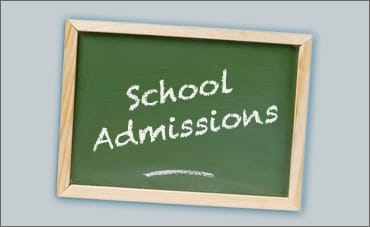
3 Facts about the links between the ISEE and the ERB tests
1. The Tests are Written by the Same Company, the ERB
The Educational Records Bureau is a non-profit achievement and assessment testing company based out of New York. They write both the ISEE admissions test and the ERB (CTP-4) assessment test – both common buzzwords for private school families in the Los Angeles area.
Since the same company writes both the ISEE and the ERB- as it is most commonly known – several features of the tests contain similar formatting and structural elements. Students in private schools who have taken the ERB for a few years will inevitably be more familiar with the formatting in some of the sections,
Primarily:
– The quantitative comparisons from the QR section
– The synonyms and sentence completions from the verbal reasoning section
– The question wording for the reading comprehension
– The stanine scoring system between 1 (lowest score ) and 9 (highest score)
2. Just Because the Scoring is the same doesn’t mean the difficulty levels are the same
Parents often expect the scores to be comparable since the same company develops both tests; however, given the purpose of the two tests, the scores themselves differ.
The ERB is an assessment test often meant to be used internally for the schools, so the content itself is a broad range of material at the grade level of the students who are taking the test. Students should expect to see content from 4th grade only if they are taking the 4th-grade test. Since the content adheres to the national standards and, given the range of schools’ curriculum across the country, students will notice some material still new to them. The wording of the questions – specifically word problems – may diverge from what their normal coursework. Overall, the test is all within the scope of what they are expected to know at their age group.
The intent of the ERB/CTP-4 is primarily to be a tool intended for schools to determine if their curriculum and instruction effectively instill in students the ability to demonstrate mastery of concepts at their grade level. A school may notice that the majority of their 4th graders missed a large number of fractions and decimals questions and use that score to make adjustments to their curriculum for the next year. The same school may also use a student’s individual scores to place a student in a higher level, mid-level or lower-level Math course, based on their stanines.
The ISEE, on the other hand, is an achievement test. The content no longer tests a student just their grade level. All levels of the test have content from at least two grades. The Lower level test assesses 4th and 5th graders; the Middle Level test assesses 6th and 7th graders and the Upper Level test assesses 8th through 11th graders. Already, a student will need to prep for at least twice the amount of material as the ERB since they will be seeing at least two years of Math, Reading, and vocab instead of one. This test is very challenging and it often takes parents by surprise to see a drastic dip in the scores between the ERB scores and the ISEE.
It’s not a poor reflection on the school’s academic rigor and it is certainly not meant to be a reflection of a student’s own academic merits. It is helpful to know that the ISEE is a harder test that has a broader scope of content and an interest in challenging students to see what they are capable of doing. The goals of the tests are intrinsically different, so it logically makes sense that the scores would be different.
3. Test Prep is different for both tests, but they do compliment each other
In preparation for the ERB, students and parents would most benefit from reviewing school work over the past year, expanding their vocabulary, practice making equations from word problems and familiarizing themselves with the quantitative comparison sections. For more information about the ERB, visit our blog post ___. For information about the ISEE, click here.
It very often happens that the skills used to take the ERB will transfer to the ISEE. Students practice process of elimination, reading for information, vocabulary memorization and translating word problems into Math sentences in our ERB Prep course, and all of those skills apply directly to the ISEE. It is absolutely beneficial to take the ERB prep course knowing that the skills our students build in that course will apply to the ISEE as well.
As always, we recommend our families balance their test prep with other opportunities and prevent test prep from taking over their lives. It is always in the best interest of students and families to maintain a balance between school, homework, standardized testing and extra-curricular activities. Our goal is to explain the tests and give our families information to help them know more about the process.

